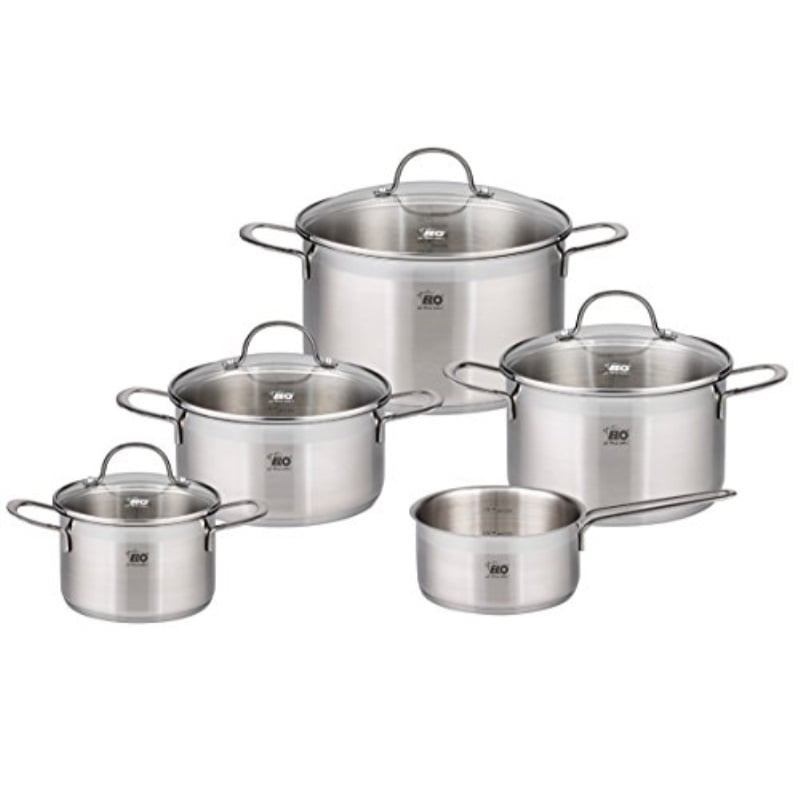

Its higher nitrogen content makes it more resistant to salt and saltwater than many other types of steel. ➔ It’s useful at sea– If you live in a coastal region or own a boat, 18/10 stainless steel will come in handy in your kitchen. You can leave it over a fire without it bending or melting. This makes it ideal for cookware, such as pots and pans. ➔ It’s highly heat-resistant – 18/10 stainless steel can also stand up to high heat. Its anti-corrosive properties make it suitable for cooking with vinegar and other acidic foods. It can even hold acidic products and other causative chemicals without degrading. ➔ It is highly anti-corrosive – 18/10 steel contains a high amount of nickel and chromium, making it more resistant to corrosion than many other types of stainless steel. This makes it well suited to kitchen equipment such as pots and pans, flatware, and utensils without costing extra for intense machining. ➔ It’s easier to mold – 18/10 stainless steel can be easily molded into shape without much resistance. Nonetheless, it’s still durable stainless steel commonly found in most household kitchens.ġ8/10 stainless steel stands out from other varieties of stainless steel for the following reasons: While the carbon content may seem low, if smelters were to add more carbon, it would become more prone to rust and corrosion. These steels generally contain 0.1% carbon to strengthen the final product. This doesn’t affect the steel’s corrosion resistance while helping the consumer at the cash register. Sometimes, though, smelters will reduce the amount of pure chromium to 16% and add an extra 2% molybdenum to lower the cost. Therefore, these metals tend to cost more than nickel-free steels.ġ8/10 stainless steel is a type of stainless steel cast with 18% chromium and 10% nickel. Stainless steel cast with more nickel will be stronger and more durable than steel cast entirely with chromium. However, chromium and nickel are more expensive than iron, so smelters use varying amounts of these two metals to better manage the cost to the consumer.Īdding nickel and chromium also affects the overall strength of the steel. These two metals are both resistant to rust and other forms of corrosion so, when added to steel, they boost the steel’s overall anti-corrosive properties. Most stainless steels are cast using a mixture of chromium and nickel.

Stainless steel helps resolve this problem by adding additional metals to make it more resistant. Yet, it’s still susceptible to corrosion. When smelters cast steel, they use a combination of iron and carbon to make a stronger, more durable metal. To understand the difference between these three commonly used types of steel, you’ll first need to understand what makes stainless steel “stainless”. An Overview of 18/10, 18/8, and 18/0 Stainless Steel With this information, you’ll be able to find the best flatware for your household needs. In this guide, we’ll help explain the main differences between these three types of steel, what they’re commonly used for, and the pros and cons of each. Varying amounts of nickel and chrome affect the steel’s strength and anti-corrosive properties. For example, 18/8 stainless steel contains 18% chrome and 8% nickel. The three numbers used to differentiate stainless steel show the percentages of nickel and chrome used to make the metal.

So, what exactly makes one type of stainless steel different from another, and which makes the best flatware? These numbers don’t tell you a whole lot so it’s understandable that you might not know the difference. If you’re in the market for stainless steel flatware, you’ve probably come across three different types of steel -18/10, 18/8, and 18/0.


 0 kommentar(er)
0 kommentar(er)
